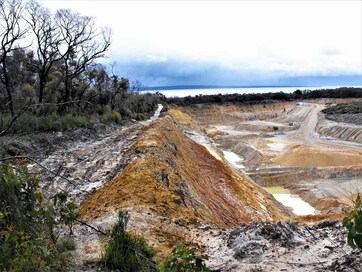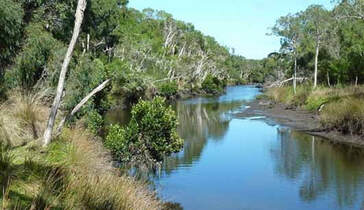 Grantville sand mine. Photo: Tim O'Brien
Grantville sand mine. Photo: Tim O'Brien By Lauren Burns
AFTER water, sand is the second most used natural resource on earth. We use even more sand than oil. Growing cities such as Melbourne create demand for the sand used in concrete. It takes about 200 tonnes of sand to build an average family house, and a kilometre of a highway requires about 25,000 tonnes.
Like many of Earth’s resources, we’re using more sand than is being naturally replenished by natural life systems. Globally, we’re using 50 billion tonnes of sand every year, twice the amount of sand produced by every river in the world.
AFTER water, sand is the second most used natural resource on earth. We use even more sand than oil. Growing cities such as Melbourne create demand for the sand used in concrete. It takes about 200 tonnes of sand to build an average family house, and a kilometre of a highway requires about 25,000 tonnes.
Like many of Earth’s resources, we’re using more sand than is being naturally replenished by natural life systems. Globally, we’re using 50 billion tonnes of sand every year, twice the amount of sand produced by every river in the world.
